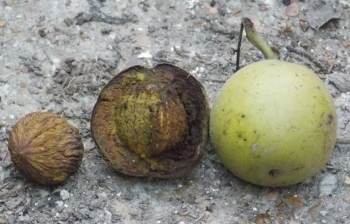Chickasaw Plum Prunus angustifolia. A thicket forming, twiggy bush which has sharp thorns along the branches, this fruit tree is common on open land along water courses and road sides. Blooming later than P umbellate, which produces umbels of flowers on the ends of stems, Chickasaw Plum produces white flowers along the full length of stems, making a display of total white “bottle brushes”. The ½” fruit begins green, turns red, then yellow when it is ripe. The leaves are soft and serrated along the edges, but longer and thinner than P umbellate. Like other members of the cherry and plum family, the leaves are toxic to livestock and rabbits. Each individual, sweetly fragrant flower is composed of 5 oval petals surrounding a central pistol with many filamentous stamen. Known clumps are most prevalent under the power lines along the DORBA trails. (401) 3/21/19; 20 no obs;
3/21/19
Note: Chickasaw Plum blooming with masses of fragrant, white flowers from nodes along entire stems

Note; thicket forming habit of Chickasaw Plum

Note; dense masses of blooms along entire stems

Note; leaf bearing twigs can form into long, sharp thorns along the small, twiggy trunks.


































